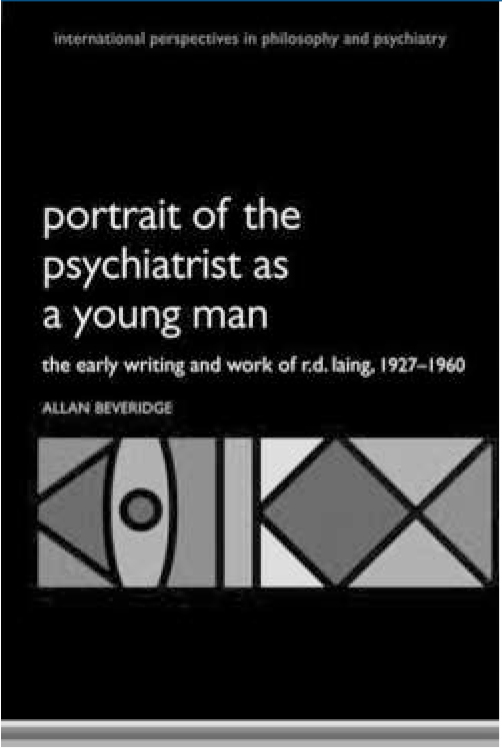
The memory of R. D. Laing, the most famous British psychiatrist to date, refuses to fade almost 25 years after his death. In 2011, a plaque was unveiled in his honour at his childhood home in Govanhill, Glasgow, on what would have been his 84th birthday. His memory has also been reinvigorated by this new intellectual biography of the early Laing by Allan Beveridge, another Glasgow-born psychiatrist with a broad interest in the arts and humanities. This volume is an important addition to the Laing literature, a body of work where one might have imagined all had already been said, because it synthesises primary research undertaken in the Laing archive at Glasgow University Library Special Collections with an in-depth understanding of both Laing's published work and the secondary literature on Laing from both academic sources and popular accounts.
One of the joys of the book is its use of extensive quotes from Laing's unpublished notebooks, including some entitled ‘Elements for an Autobiography’. Laing did publish a first instalment of his autobiography in Wisdom, Madness and Folly. The Making of a Psychiatrist, 1927–1957, which also included a section on his views of mainstream psychiatry at the point of publication in 1985, 4 years before his death. The near match between the years covered by Beveridge's biography and the autobiography allows for an exploration of where notes made by Laing at the time, diverge from his retrospective account many years later. The tendency by Laing to overplay the uniqueness of his insights and to play down the contribution of those around him is a theme of recent Laing scholarship that is brought out, once again, in this work by Beveridge. The complexity of this issue is well handled, and to read this book is to be left in no doubt that Laing was a serious and committed thinker from an early date and some of the theories that were to come to fruition in The Divided Self were already being rehearsed at medical school in prize-winning essays. Evidence is presented in an analysis of what Laing both read and retained in his library, of a precocious and driven scholar who, unusually for a medical student, was more interested in literature, theology and European philosophy than in science. Laing read and wrote daily, denying himself sleep in his pursuit of the frontier of philosophy which he hoped to extend. The Glasgow of his formative years was fertile soil to cultivate these interests, with the young Laing joining a mixed group of older men – including some such as Abenheimer and Schorstein with direct connections to thinkers admired by Laing such as Jaspers and Heidegger – to discuss philosophy.
The final ingredient for the mixture that was to produce Laing's seminal 1960 publication was clinical practice and research and, as in the autobiography, the experiences of the neurosurgical unit, the army psychiatric unit, the mental hospital, the department of psychological medicine and the move to the Tavistock Clinic are all covered in detail. The 1950s was a pivotal decade for modern psychiatry, adding to the interest of this book. Again, a fascinating aspect of this book is the comparison of notes made on patients contemporaneously, to be found in the Laing archive, with the later incorporation of the shortened, anonymised and reinterpreted case histories in Laing's published work. An impression is formed of a dedicated clinician trying to do the best for each individual in his care. The approach continues with Laing's move to London despite Laing having doubts as to his initial practice there, removed from his primary interest in the psychotic state.
Of particular interest for myself is the account of Laing's 18 months at Gartnavel Royal Hospital and his relationship with the Physician-Superintendent, Angus McNiven, there. We are at the tipping point of institutional psychiatry and Laing's contribution, along with others, to the movement towards closing the asylums is one of his main legacies, along with the strong advocacy that the severely mentally ill have a legitimate voice.
The book leaves us with Laing – a psychiatric Icarus (see end of Chapter 1) – fully winged and about to take flight with the publication of The Divided Self in 1960. We are left with an insightful and fresh account of the making of this particular psychiatrist, with the biases of our knowledge of Laing's subsequent divisive reception kept to a minimum.
A finer memorial birthday present would be hard to imagine.



eLetters
No eLetters have been published for this article.